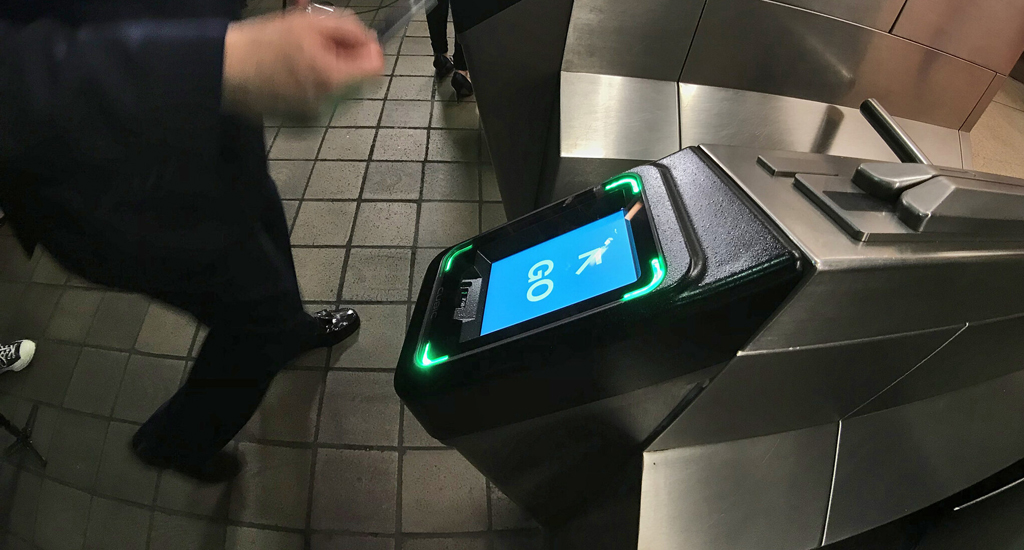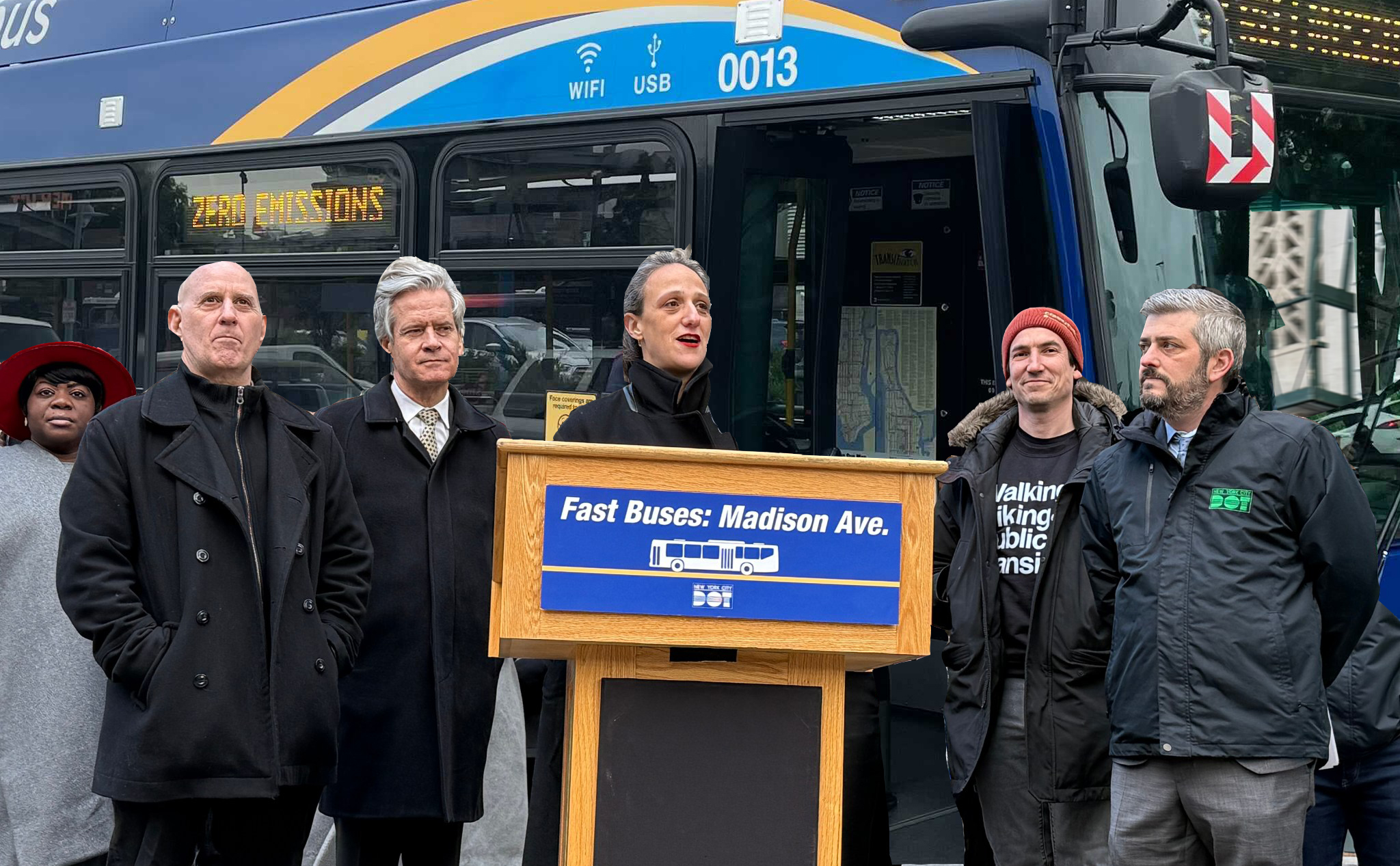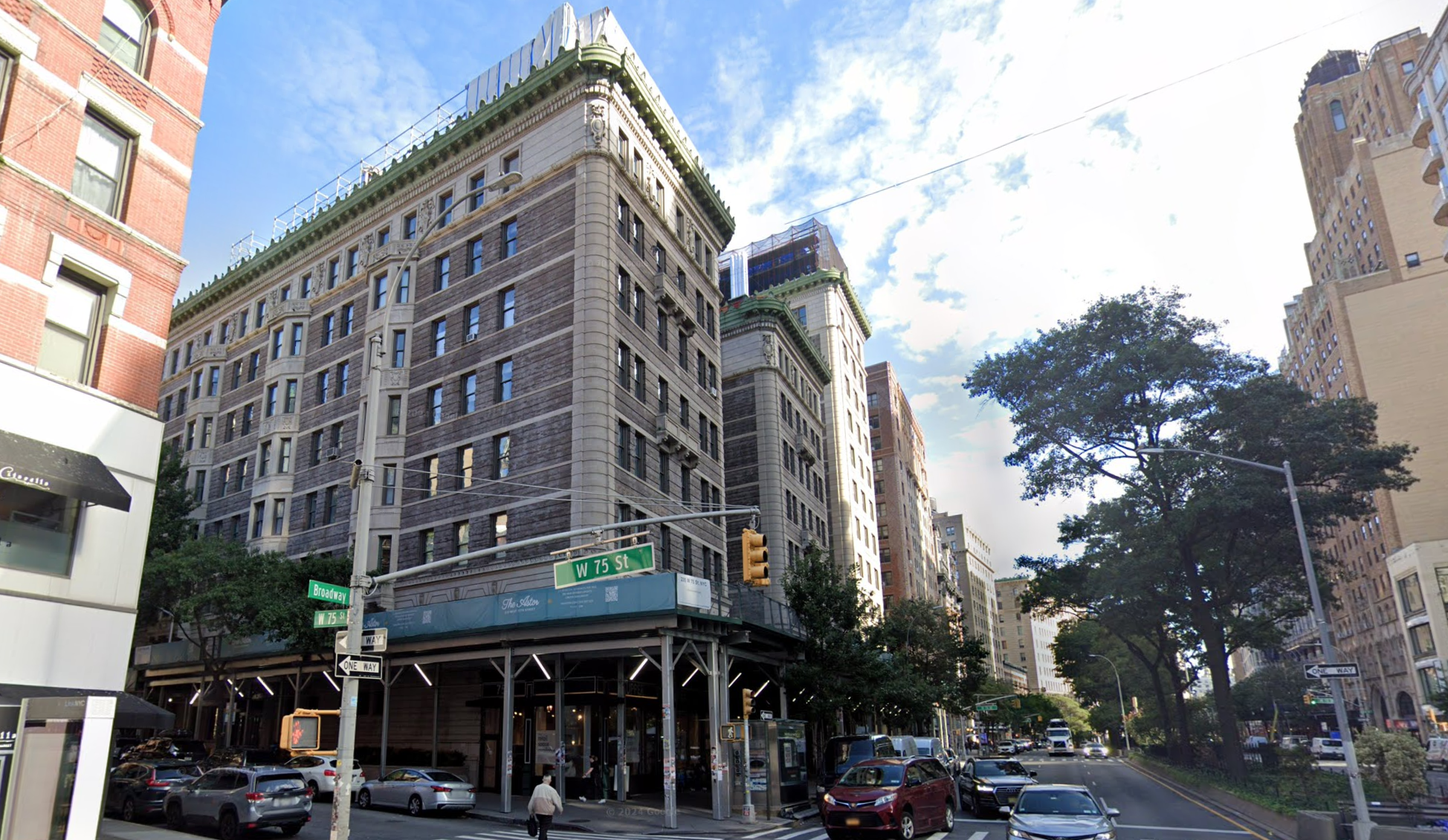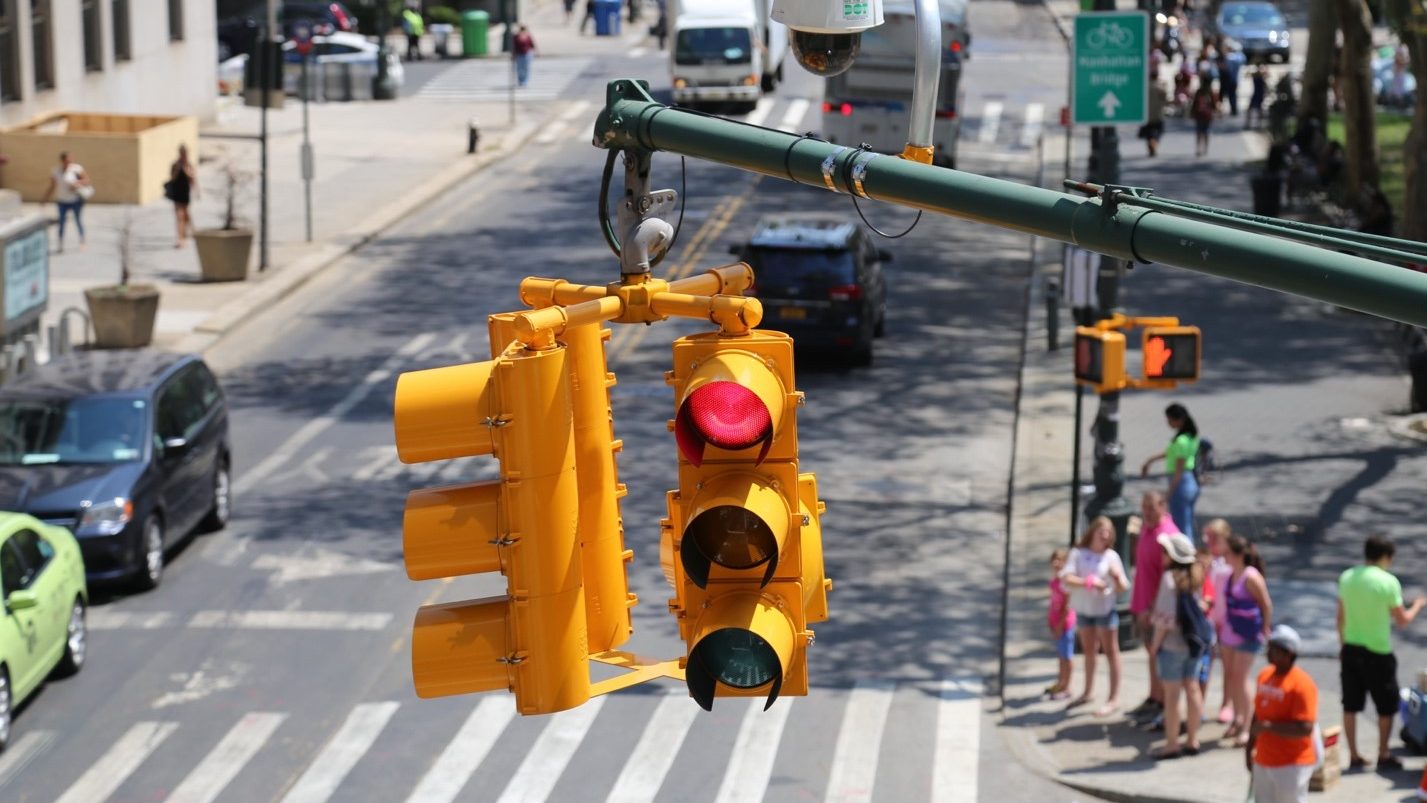The MTA's beleaguered tap-and-go fare payment system OMNY will finally come to Metro-North and the Long Island Rail Road next year after years of delays — but without OMNY contractor Cubic at the helm, transit officials revealed on Friday.
Another contractor, Masabi, will instead oversee the incorporation of bus, subway, and commuter rail fares and schedules into the LIRR and Metro-North's popular trip planning and ticketing app MTA TrainTime, with the commuter rails running their own back-end software for fare collection, officials said.
"This is the best way to get this done as quickly as possible so that we don’t have any interruption in the quality of our ticketing service," MTA Construction and Development President Jamie Torres-Springer said in an exclusive interview.
“We’re announcing a full plan to implement a revised vision ... to finish OMNY, make it available to essentially all the users by the end of this year, and then fully complete it with all the bells and whistles by the end of next year," Torres-Springer said.
Transit leadership once promised the new fare system would usher in a "single, seamless, superior customer experience." But OMNY, which stands for One Metro New York, has failed to catch on among even bus and subway riders, the majority of whom still use the 30-year-old MetroCard.
The MetroCard's official end date — initially scheduled for 2023 — is "indefinitely" postponed. Public school and CUNY student fares and pre-tax monthly passes, which account for a huge chunk of riders, are still unavailable on OMNY — though officials aim to fix that by the end of this year, Torres-Springer said.
The 2017 OMNY contract ballooned from an initial $573 million to $772 million as the company changed ownership and, along with the MTA, faced significant turnover. The increase is partly due to an $85 million in change orders that Cubic was allowed to do under the original contract, while the remainder came from the MTA side, a company spokesperson said.
The firm did not plan to bring the commuter rail into OMNY until 2027 — six years behind schedule. Under the revised plan officials will present to the MTA board this week, Cubic will also lose its contract to build new commuter rail ticket vending machines to Scheidt & Bachmann, which built the existing ticket kiosks for the two railroads.
Cubic will refund the MTA $36 million to cover the cost of the two new contracts, pending approval by the board.
Masabi's MTA TrainTime app is unusually popular for public service software, with a 4.9-star rating in Apple's App Store compared to the 1.8-star "Official MTA" app. The upgrade will allow for fare packages that encompass buses and trains operated by New York City Transit and the railroads, officials said.
“We have the ability to issue tickets to railroad riders that can then be used to ride the subway in an integrated fare, to create pay-as-you-go on the railroad — we have the flexibility for that," Torres-Springer said.
Riders will be able to use a single login for their OMNY account and their TrainTime account, unifying the front end, even if the back end will be managed by three contractors, according to MTA Senior Director for Commercial Strategy Jessica Lazarus.
"We're creating connections between the platforms that are invisible to the customer but create that sense of interoperability and cross-mode travel," Lazarus told Streetsblog.
OMNY's software will also allow for the future possibility of "one central back‐office clearing house" for fares and payment for commuter rails, subways, buses and other "affiliates" like the suburban bus companies that use MetroCard, according to a memo released Friday ahead of the board meetings.
Late arrival
In addition to the lack of commuter rail integration so far, OMNY has faced myriad problems, including:
- that the system still does not include a full rollout of "non-regular" fare payment methods include pre-tax benefits, student MetroCards, paratransit fares and reduced fare programs like Fair Fares.
- that OMNY will not work on the trans-Hudson PATH subway because the Port Authority launched its own system with Cubic for the sake of what a rep called "timeline certainty." The Port Authority only began accepting OMNY at JFK AirTrain last fall.
- that the MTA and Cubic have been slow to install cash-accepting OMNY vending machines, currently available at just 37 of the city's 472 subway stations.
- that OMNY readers installed at the back-door of buses to unlock faster service through all-door boarding remain inoperable, because the agency fears too much fare evasion.
Since the start of Cubic's contract, the MTA has been led by two governors and three chairmen plus a revolving door of presidents at New York City Transit, Metro-North and the LIRR. A consultant's review of the contract released on Friday, on the other hand, dinged Cubic for "insufficient staffing resources, inadequate [quality assurance] and software defects."
Former officials who worked on OMNY and experts from across the country pinned the logjam on complicated software needs and heavy turnover at both the MTA and Cubic.
“Several people left the project, and the wheels sort of fell off,” said Al Putre, the authority's former OMNY project leader and hype man, who retired in 2021.
“It’s hard to replace institutional knowledge,” said Putre, who worked on fares at the agency during the token-to-MetroCard transition in the 1990s. “Go down the line, all these folks that we had assembled for this team, they started jumping ship.”
The project had an "aggressive," and perhaps overly optimistic, schedule from the beginning. Former Gov. Cuomo shaved off another six months to get the work done in time for his reelection campaign, Putre claimed.
"When you take six months out of an already aggressive schedule, it causes you to compress the other parts," Putre said. "Installation gets rushed, testing gets rushed, and that builds in inherent risk."
Rich Azzopardi, a spokesman for the former governor, said Putre "clearly doesn't know what he's talking about" and noted that Cuomo "never promoted" OMNY.
Cubic, for its part, sold to a pair of private equity firms in 2021. Putre said his team's counterparts at the firm departed not long after the sale, taking decades of expertise and experience with them.
At the same time, Cubic took on more fare transition orders — including the CharlieCard on Boston's T and the Clipper card in the Bay Area, the latter of which will fold in 27 different transit agencies. Cubic's work faces delays across the country, and the firm has lost out on bids where it would have been the odds-on favorite in the past, such as for a national fare contract in Ireland.
"We’re probably struggling the same way New York has, you know, our rollout has been a little bit delayed," said Andrew Fremier, executive director of Metropolitan Transportation Commission, the transportation planning agency for the Bay Area.
"It comes from a little bit of challenges that they have and some challenges that we have... In general, they're delivering a good product, it's just taking us longer to roll it out."
Reached for comment, Cubic chalked up OMNY delays to the Covid-19 pandemic. The MTA's focus on a weekly fare cap also led to the de-prioritization of deploying the new fare tech for students and pre-tax passes, a spokesperson said.
"Building and innovating transit technology to scale in a region as vast as New York is always a challenge even under the best conditions, but it’s one our team loves," said the Cubic rep, Cory Shields. "Alongside our partners at the MTA we believe the OMNY program is an incredible success story and we are fully committed to continue building on it to meet the needs of every New Yorker."
Not OMNY-present
OMNY first hit turnstiles in 2019, yet 52 percent of the city's ridership has yet to make the switch as of last month. The MTA has especially struggled to get working class riders on board: Top stations for OMNY use are in well-heeled areas with a lot of young people, with usage rates two-to-three times higher than end-of-line stations in the Bronx or Brooklyn, the MTA said last September.
The upgrade lets riders use bank cards, smart devices or MTA-issued OMNY cards loaded up online or at vending machines to enter the subway system or ride buses. But there are just 70 vending machines across 37 of the MTA's 472 stations. The MTA now plans to roll out 993 machines by mid-2025, according to this week's contract update — barely half of the 1,720 originally planned.

MTA officials acknowledged that they need to push beyond single trip fares to reach about 40 percent of riders whose current pass only exists on MetroCards. The agency recently announced a limited OMNY pilot for participants in the city's Fair Fares program for lower income New Yorkers.
"The ultimate goal is to ensure all [bus and subway] customers and ridership classes are able to transition from MetroCard to OMNY by the end of 2024," MTA officials wrote in the proposed contract modification memo released on Friday ahead of this week's authority board and committee meetings.
Nassau County and Westchester County bus passes will enter the OMNY-verse in 2025, according to the memo.
Delays and agency silos have kept OMNY from reaching its true potential, according to Lisa Daglian, executive director of the MTA's Permanent Citizens Advisory Committee.
“[OMNY] absolutely made a ton of progress in making it easier to enter and use the system, particularly for international travelers and new users in general," said Daglian. "Now we have to integrate the older and more established users into the system."
Update (May 20, 1:13 p.m.): This story has been updated to include additional information about the OMNY contract's cost increase provided by Cubic.






